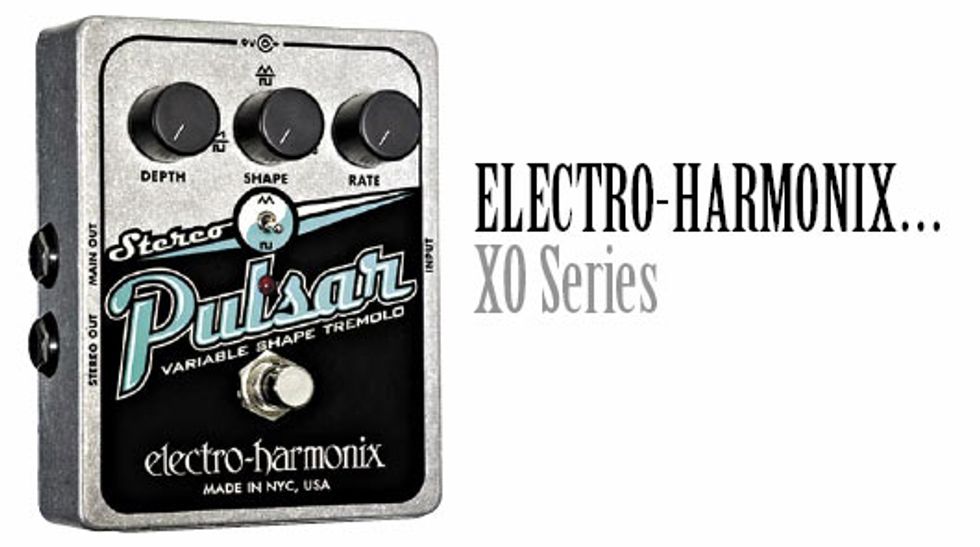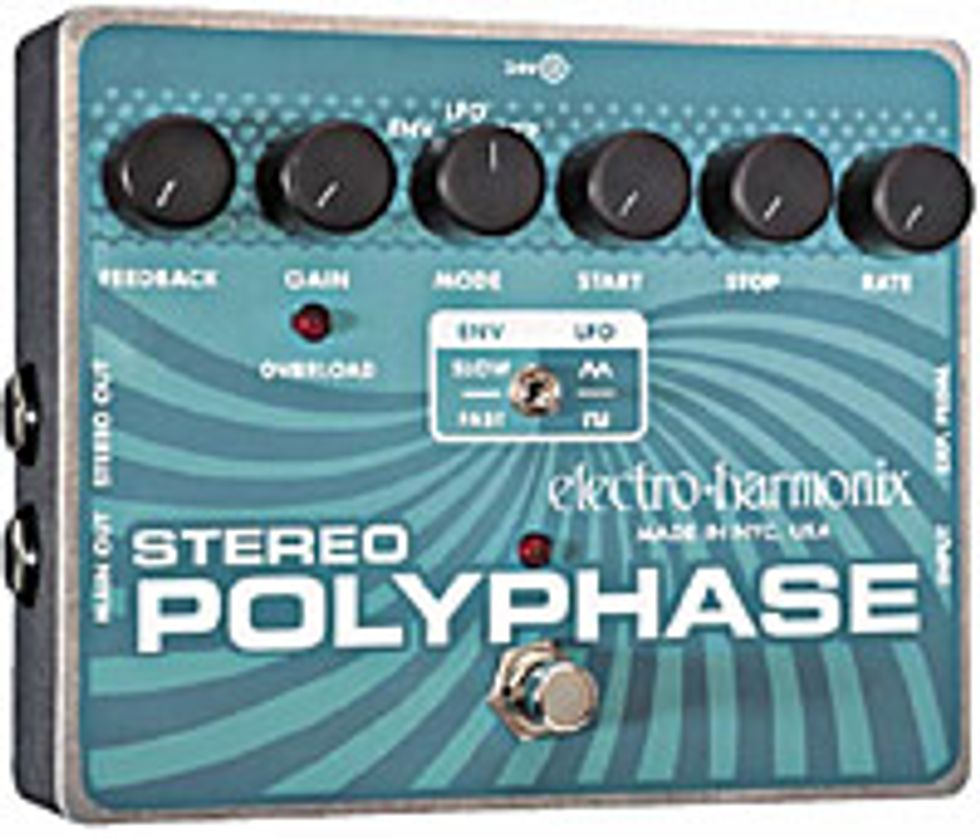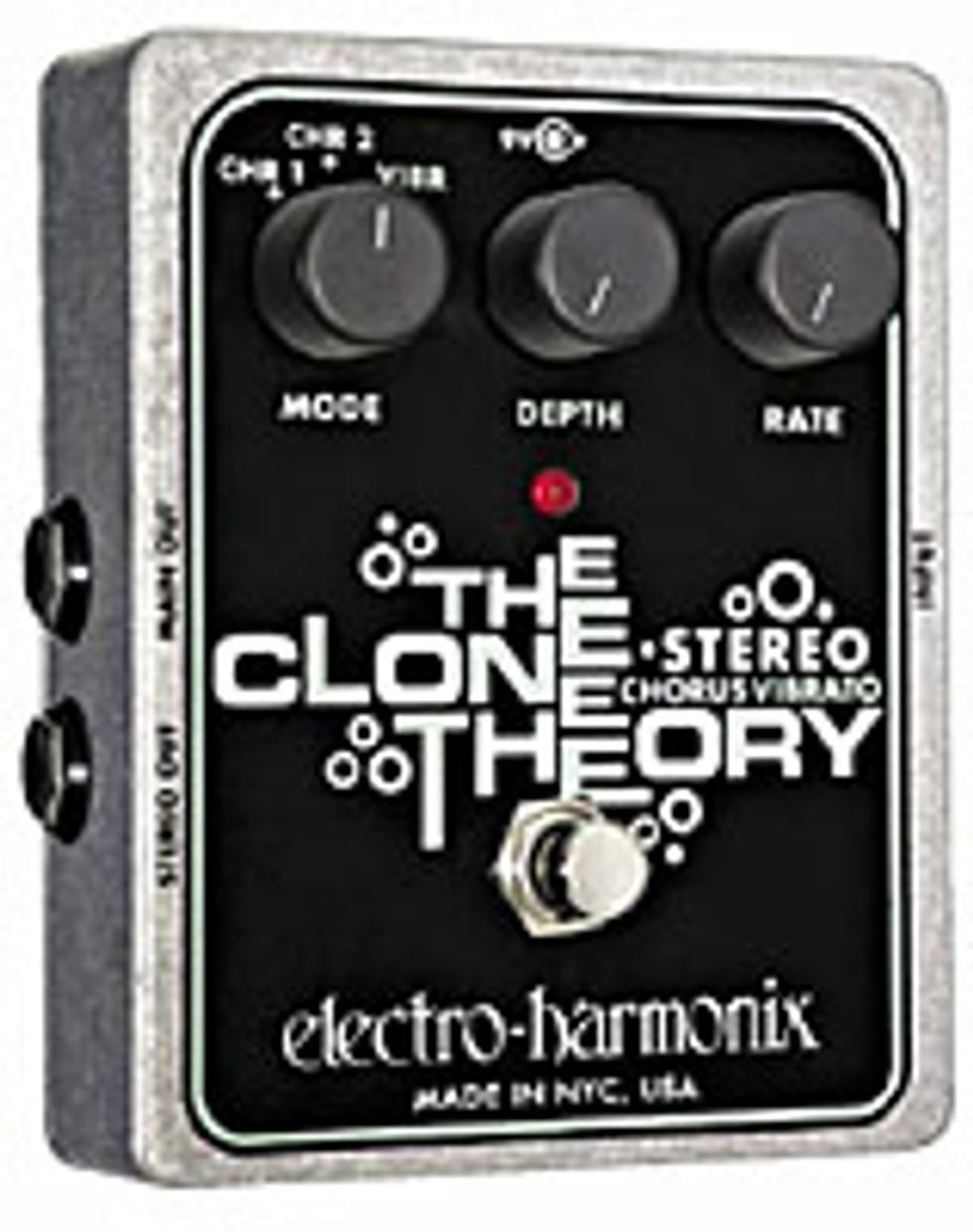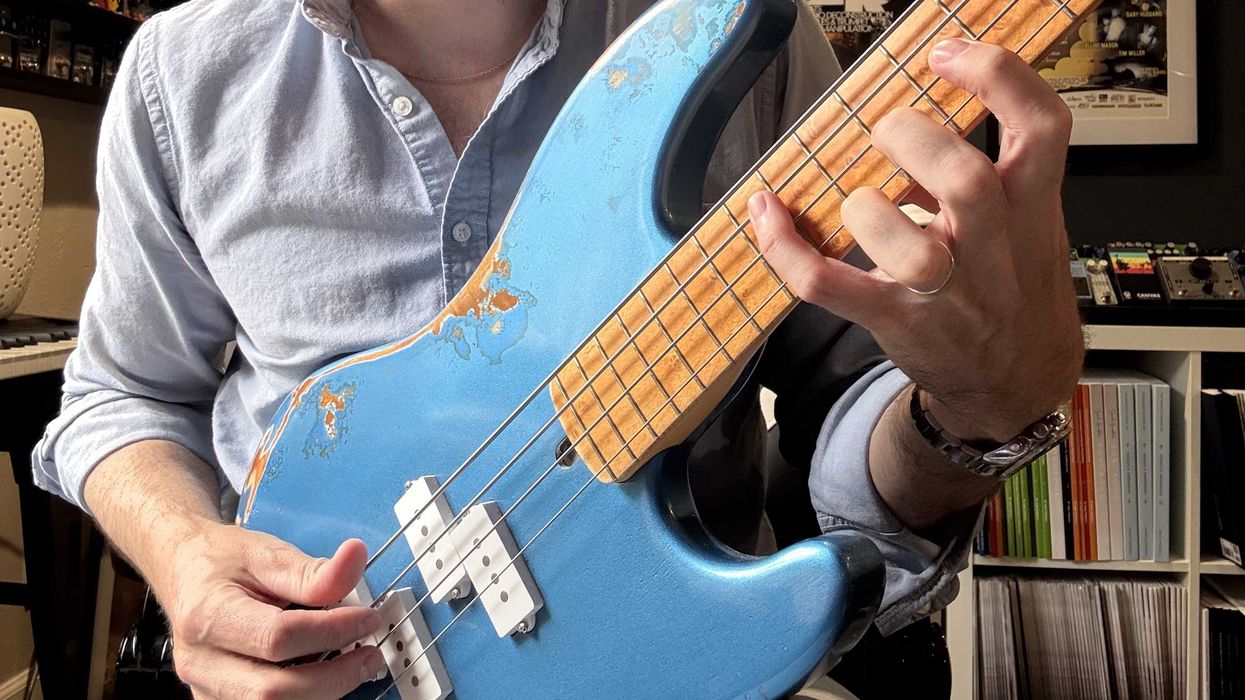
Electro-Harmonix effects have been known for many things: great value, amazing tone and somewhat delicate cases. It has always been an accepted evil in the price/ performance equation, with some people going as far as using loopers to keep their favorite pedals away from threatening feet. Inexpensive, great sounding and sturdy. Until recently, the choice was pick any two.
Mike Mathews, the mastermind behind EH, whose name is synonymous with manufacturing tubes in the former Soviet Republic, subsequent run-ins with the Russian mob, as well as being a true innovator in general, addressed the issue of delicacy recently by shoe-horning a few single knob effects into some sturdier cases, and marketing them as the Nano line. These have been successful enough to warrant sourcing some larger, equally sturdy die-cast cases and giving some larger box effects the same treatment. Dubbed the XO series, the good people at EH were kind enough to send us a few to check out. They sent the Stereo Pulsar tremelo, the Stereo Polyphase phaser and the Clone Theory chorus. All three pedals feature sturdy-looking corrugated metal enclosures with retro silk screening and true-bypass switching.
The Stereo Pulsar
First we have the Stereo Pulsar (MSRP $110.00). In typical EH fashion, this pedal is quirky, but yields tons of chewy, organic tremolo. With some tweaking, it will get close to vintage Fender territory, but that is not its forte. Instead, think oddball vintage tremolo, like an old Supro or Selmer amp. It offers plenty of adjustment with Depth, Shape and Rate knobs and a switch that goes from triangle to square wave.
The controls are interactive enough that changing one appreciably will require tweaking at least one other. The Depth and Rate controls are self-explanatory. The Shape knob is where the fun begins. With the wave shape switch in triangle mode, the Shape knob adjusts from rising sawtooth, to triangle, to falling sawtooth. When in square wave mode it goes from small pulse, to square wave, to large pulse. The more extreme settings aren’t super useful in mono, with most of the good stuff in the middle. In stereo, however, they can create some really incredible sounds, with the pulse modulating useful in virtually all Shape settings across the stereo field.
Switching back-and-forth between square and triangle wave, the shapes produced covered everything from the aforementioned vintage weirdness to a more modern, chopper-blade on-off thing. The Pulsar was able to make unique sounds that could easily become integral to a riff or a song, especially in stereo.

Next up was the Stereo Polyphase (MSRP $278.00 w/ 24V power supply). EH is famous for making pedals like this, which are almost overwhelming in what they can do. This thing isn’t set-all-the-knobs-at-noon and have at it, but with a little time a hot mess of really usable sounds are available.
Sonically speaking, the Feedback control behaves like a depth control, while Gain sets the input level in ENV mode. Mode selects between ENV (envelope), LFO (low frequency oscillator), and EXP (expression pedal). The Start and Stop knobs select the range of the sweep – very cool. The Rate knob then controls the oscillator speed in LFO mode. In the center there is a switch to go from slow to fast in ENV mode or triangle wave to square wave in LFO mode.
In LFO mode everything from ‘70s swirl to ‘vibe whirl is available, in addition to a passable slow Leslie sound. In envelope follower mode, I was able to get some nice vowel-ly sounds once the input gain was set properly. Envelope follower effects have always fallen flat for me in the past, due in no small part to them conjuring up images of jam bands twenty minutes past the interesting part of the third guitar solo; however, the Stereo Polyphase does its own thing quite nicely, thank you. I was able to oww oww myself into a virtual coma without once imagining dubious-smelling vegetarians whirling around me. Although the Stereo Polyphase sounded nice in stereo, it wasn’t quite as spiritual as the Pulsar plugged into two amps.

Finally, I plugged in the Clone Theory (MSRP $158.00). The arrival of this pedal coincided with my search for a nice, fat chorus pedal that was fast enough for a convincing Leslie sound. I popped the pedal out of the box, plugged it in, then moved the Mode knob to CHR 1, which sets the Clone Theory up like a Small Stone, with only Rate being active and Depth being set automatically. I moved the Rate knob to a fast setting, and boom, there it was. It was so obvious that my wife came flying into the room, exclaiming, “That’s it! That’s the sound you’ve been looking for, isn’t it?” She was correct in her assumption.
Further adjustments of the Rate knob offered up pretty much every ‘80s chorus sound one could hope for, from Nirvana to the Pretenders. Moving the Mode knob to CHR 2 allowed the Depth control to come into play. Cool seasick warbles and Japanese toy robot sounds live here. VIBR is vibrato mode, and while sounding best when used in stereo, wasn’t my favorite. And you know what? All the sounds – great, good, and marginal – were noisy. Really noisy.
The Final Mojo
Electro-Harmonix has done a fantastic job with the XO series, and has certainly taken care of any sturdiness issues. The Stereo Polyphase is a great pedal, and the Stereo Pulsar is amazing. It is definitely the star of this show, but I would have no qualms recommending either. The Clone Theory has some amazing sounds bottled up inside, but I would like to see the noise issue dealt with before I give it an enthusiastic thumbs up.


























